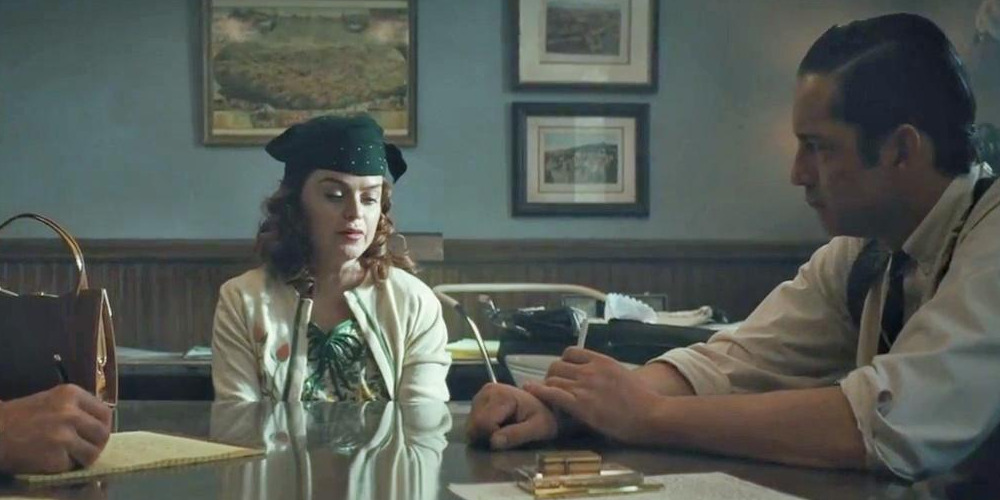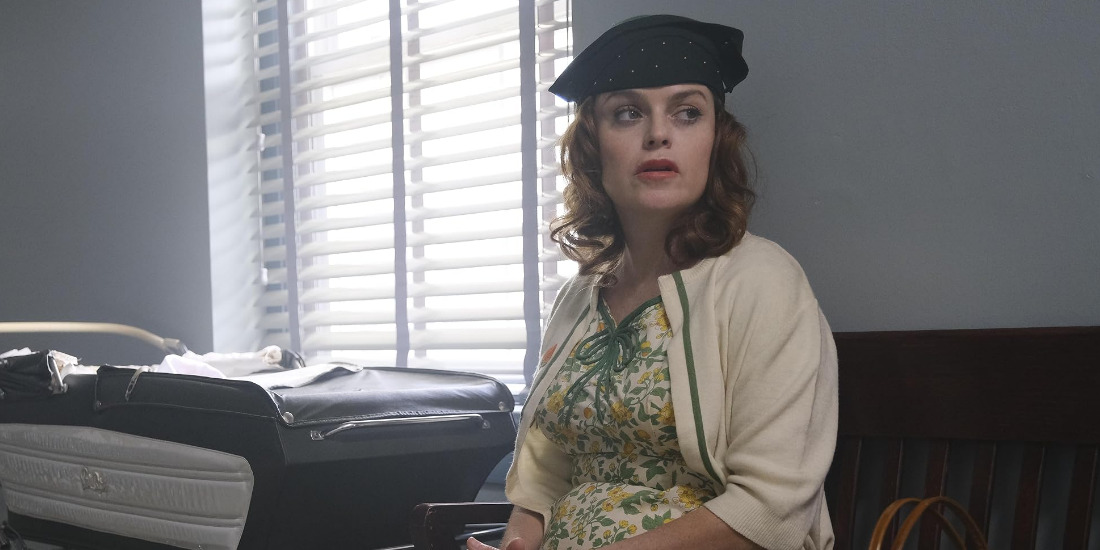‘Miranda’s Victim‘ brings the real-life story of Patricia “Trish” Weir, an 18-year-old girl who sought legal action against Ernesto Miranda, her kidnapper/rapist, at a time when sexual assault victims faced vehement social stigma. The crime drama-driven film follows Weir, whose efforts help the cops catch and deliver conviction upon Miranda. However, a few years later, the incident comes back to pause Trish’s journey toward healing when Miranda’s sentence gets dismissed after the Supreme Court’s new ruling declares his incriminating confession inadmissible. As such, Weir is forced to repeat her uphill battle and partake in the brutal process of bringing her case to the judicial system in a retrial.
The film, a biographical account of the history behind the well-known “Miranda Rights,” expertly depicts the reality of the legal process behind Weir’s pursuit for justice. Twila Hoffman, Taryn Manning’s character in the film, occupies an instrumental role within the same as one of the witnesses against Miranda during his ultimate Court trial. Therefore, given the woman’s close connection to the infamous convict, viewers must be wondering what became of Hoffman after the film’s events.
Who Is Twila Hoffman?
Twila Hoffman first met Ernesto Miranda when the latter was 21 and freshly out of federal prison after auto theft convictions. The woman, eight years older than Miranda, underwent a recent separation from her husband and had two children from the marriage. Nonetheless, the pair’s relationship moved quickly, with Miranda moving into Hoffman’s house in two months and welcoming a daughter, Cleopatra, the next year. Since the couple sealed their union with a common-law marriage, it left no official paperwork recognizing their relationship.

Soon after their daughter’s birth, Hoffman and Miranda moved their family to Mesa, where the former got a job at a Nursery, and the latter became a Dockworker. The job proved to be the man’s first venture into a consistent career. That is until one 1963 morning brought two Detectives, Carroll Cooley & his partner, to Hoffman’s door. The Detectives working on Patricia Weir’s case had tracked her possible assailant to Miranda from the Hoffman’s car, the 1953 Packard, which they suspected to be the vehicle the man kidnapped and assaulted Weir inside.
Thus began Miranda’s long battle with the justice system after he was found to be guilty of kidnapping and assaulting Weir. His initial conviction, in 1963, condemned him to a sentence of 20-30 years in prison. Alongside witness statements from Weir, her sister, and the two Detectives, one of the instrumental pieces of evidence in Miranda’s conviction was his own written confession.
As such, Miranda took an exit from Hoffman and her children’s lives. During this time, the woman had a child with another man, which resulted in Miranda demanding custody of Cleopatra upon his release. Furthermore, it wasn’t long before the woman had to face the possibility of his return. In 1966, a 5-4 ruling from the Warren Court led to the inadmissibility of Miranda’s confession, dismissing his conviction.
As such, Miranda entered a retrial, where the prosecution could not use his confession against him since it was made without explicit knowledge of his civil rights. Nevertheless, Hoffman possessed damning evidence against her common-law husband. On March 16, 1963, shortly after Miranda’s initial arrest, Hoffman had visited her husband in lockup. During her visit, Miranda confessed to kidnapping and raping Wier and asked Hoffman to convince Weir’s family to drop the charges against him.
According to reports, Miranda wanted Hoffman to convey to the Weir Family that he would marry their daughter but assured his present common-law wife that it would only be a false promise to get out of jail. Hoffman, predictably, never followed up on his request. Consequently, years later, in 1967, when Miranda was under retrial, Hoffman approached Cooley and agreed to testify as a witness against Weir’s abuser. Ultimately, Weir’s testimony ended up playing a crucial role in Miranda’s second conviction, where he was found guilty once again.
Twila Mae Spears Disappeared From The Public Eye After The Trial
Like many individuals involved in Miranda’s court cases, Twila Hoffman also went away from the spotlight with Miranda’s second and final guilt conviction. For the most part, Twila and her kids withdrew from Miranda while he served jail time. Although the man attempted to contact his daughter, Cleopatra, on a few occasions, her mother prevented any contact between them.
The same situation persisted after Miranda managed to get out of prison in 1973 on parole. The same year, Miranda’s attorney, John Flynn, reportedly reached out to Hoffman via a letter and asked for visitation rights on the father’s behalf, only to be turned away immediately. “This letter is very close to harassment,” read Hoffman’s reply. “Any other correspondence as to this matter will result in Legal action.”
The woman signed the response under her new name, “Twila Mae Spears,” accompanied by a “NO,” scrawled in Magic Marker. Although the incident occurred over 50 years ago, it is the last known public record of Twila Mae Spears, previously Hoffman. Since the woman chose to live a private life, there is no information available about her or her family’s current whereabouts. However, the January 8, 2006, Arizona Republic Newspaper carries an obituary for the woman, seemingly confirming her death on January 2, 2006, at the age of 73.
Read More: Patricia “Trish” Weir: Where is “Miranda Rights” Survivor Now?


You must be logged in to post a comment.